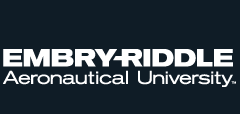Proposal / Submission Type
Peer Reviewed Paper
Location
St. Paul, Minnesota
Start Date
20-5-2010 1:00 PM
Abstract
Steganography is a way to communicate a message such that no one except the sender and recipient suspects the existence of the message. This type of covert communication lends itself to a variety of different purposes such as spy-to-spy communication, exchange of pornographic material hidden in innocuous image files, and other illicit acts. Computer forensic personnel have an interest in testing for possible steganographic files, but often do not have access to the technical and financial resources required to perform steganalysis in an effective manner. This paper describes the results of a funded effort by a grant from the National Institutes of Justice to develop a user friendly and practical software program that has been designed to meet the steganalysis needs of the Iowa Division of Criminal Investigation in Ankeny, Iowa. The software performs steganalysis on JPEG image files in an efficient and effective way. JPEG images are popular and used by a great many people, and thus are naturally exploited for steganography. The commercial software that is available for detection of hidden messages is often expensive and does not fit the need of smaller police forensic labs. Our software checks for the presence of hidden payloads for five different JPEG-embedding steganography algorithms with the potential of identifying stego images generated by other (possibly unknown) embedding algorithm.
Keywords: steganography, steganalysis, JPEG images, GUI software
Scholarly Commons Citation
Davidson, Jennifer L. and Jalan, Jaikishan, "CANVASS - A Steganalysis Forensic Tool for JPEG Images" (2010). Annual ADFSL Conference on Digital Forensics, Security and Law. 6.
https://commons.erau.edu/adfsl/2010/thursday/6
Included in
Computer Engineering Commons, Computer Law Commons, Electrical and Computer Engineering Commons, Forensic Science and Technology Commons, Information Security Commons
CANVASS - A Steganalysis Forensic Tool for JPEG Images
St. Paul, Minnesota
Steganography is a way to communicate a message such that no one except the sender and recipient suspects the existence of the message. This type of covert communication lends itself to a variety of different purposes such as spy-to-spy communication, exchange of pornographic material hidden in innocuous image files, and other illicit acts. Computer forensic personnel have an interest in testing for possible steganographic files, but often do not have access to the technical and financial resources required to perform steganalysis in an effective manner. This paper describes the results of a funded effort by a grant from the National Institutes of Justice to develop a user friendly and practical software program that has been designed to meet the steganalysis needs of the Iowa Division of Criminal Investigation in Ankeny, Iowa. The software performs steganalysis on JPEG image files in an efficient and effective way. JPEG images are popular and used by a great many people, and thus are naturally exploited for steganography. The commercial software that is available for detection of hidden messages is often expensive and does not fit the need of smaller police forensic labs. Our software checks for the presence of hidden payloads for five different JPEG-embedding steganography algorithms with the potential of identifying stego images generated by other (possibly unknown) embedding algorithm.
Keywords: steganography, steganalysis, JPEG images, GUI software

